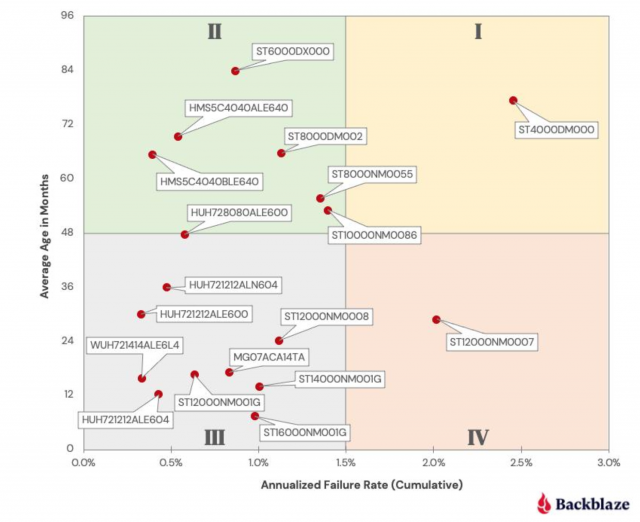
Backblaze Releases Star Wars-Themed Q1 HDD Reliability Results
If you thought hard drive reliability and a galaxy far, far away could never be combined, you have much to learn. In honor of May 4th, cloud backup company Backblaze has released its Q1 drive reliability results, lightly sprinkled with various references to Star Wars. In Q1 the company monitored a total of 207,478 hard drives throughout its data centers. Its report focuses on the drives still in use at that time, and also examines lifetime failure rates. As an example of how this is going to go, it starts off with a Yoda quote from The Last Jedi: “The greatest teacher, failure is.
In the , the most resilient “senior” drive in the company’s storage pods is the 6TB Seagate ST6000DX000. Though the company only has 886 of them, none failed this past quarter. This is despite the drive’s average age being over seven years. That’s an impressive feat. In fact, it’s so good Backblaze declares, “the force is strong with this one.” Ugh. An equally long-running 4TB Toshiba model also suffered zero casualties in Q1, the MD04ABA400V. It has an average age of 82.3 months. There are only 97 of those humming away in the pods though. This model has only suffered one failure per year, which is atypical.
As far as the “Padawan” drives go, aka the youngling drive, there were also several standouts. Backblaze uses three high-capacity Western Digital drive models in its pods, and none suffered failures in Q1. However, they were all recently installed. There’s a 14TB model that is a little over a year old, and two 16TB models that are almost brand new. This makes it hard to adequately assess their reliability over time.

The company also announced a new reliability visualization method, shown above. It’s called the Drive Stats Failure Square, and it divides all the drives in-use into four quadrants. The drives in the upper-right (I) are the first drives to be replaced when the time comes. They’ve been running a long time and are starting to experience failures more often. The drives in the top-left (II) are the “winners.” They have been in the pods for a long time and have low failure rates. Moving to the third quadrant (III), these are the cocky young upstarts that are hoping to move into quadrant II one day. They are probably already planning their Kessel runs. Finally, quadrant IV is the “muddlers.” These drives should be replaced but need to be monitored since they display unusual failure rates given their age.
When it comes to annualized failure rates (AFR), the company’s lifetime rating for all its drives is 1.39 percent. This number is just 0.01 percent lower than last quarter’s number. It’s part of an ongoing trend with the company that shows modern hard drives are , and are similar to SSDs in that regard. One year ago the company’s lifetime AFR was 1.49 percent, so drive reliability is slowly improving over time. Although it’s a stretch, Backblaze titles this section of the study, “You’ve failed me for the last time.”
Finally, if you need one drive to be your only hope, and just want to know which drive is the most reliable from today’s manufacturers, here they are:
- HGST: 12TB, model: HUH721212ALE600. AFR: 0.33%
- Seagate: 12TB model: ST12000NM001G. AFR 0.63%
- WDC: 14TB model: WUH721414ALE6L4. AFR: 0.33%
- Toshiba: 16TB model: MG08ACA16TEY. AFR 0.70%
Now Read: